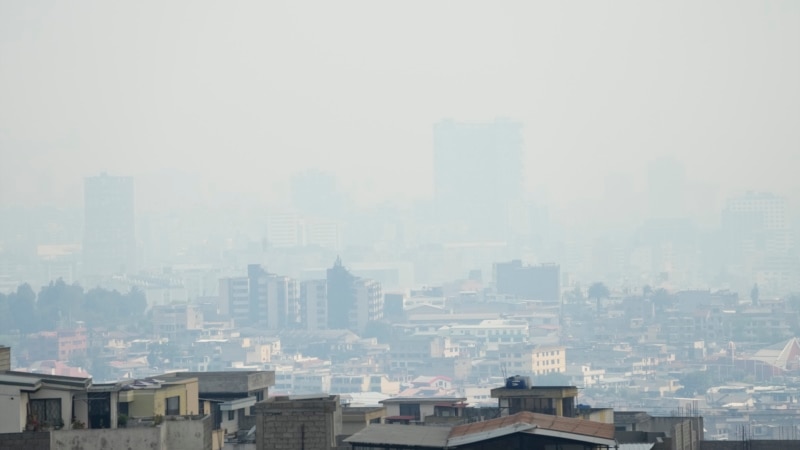A layer of fog obscured the sun on Wednesday in Cuenca, one of the most important colonial and heritage cities in the southern Ecuadorian Andes, caused mainly by dozens of forest fires and a severe summer affecting much of the country.
Paúl Feijo, manager of the Mobility Company of the Cuenca Mayor’s Office, which is in charge of measuring air quality, explained to The Associated Press that the dense fog phenomenon is due to “ash” from forest fires.
The municipal authority assured that, at the moment, the level is “unhealthy” and hoped that this will change in the next few hours.
Omar Delgado, director of the research institute of the University of Azuay, told the AP that the poor air conditions in that city, 300 kilometers south of Quito, are due to the fine particles that are suspended in the atmosphere, caused by the fires and attracted by the air currents that reach Cuenca.
The drought conditions in the southern region are exacerbating the phenomenon, Delgado added.
According to the monitoring of this institute, the level of fine particles or particulate matter (PM) suspended in the air in Cuenca was 109 PM, which implies that it is “unhealthy.”
According to Delgado, the measurement parameters are in line with those established by the United States Environmental Protection Agency, which states that air quality with up to 50 particles up to 2.5 micrometers (50 PM) is considered good, and up to 100 PM is considered moderate.
Levels above 100 are unhealthy and harmful and can enter the bloodstream, according to the World Health Organization.
In that range, where Cuenca is located, vulnerable groups such as children, elderly people or people with respiratory illnesses are obliged to “limit their exposure to the outdoors,” Delgado recommended.
Rodrigo Matute, a 64-year-old retiree who lives in the south of the city, told AP that “the haze is very clear, we have sun, but it is obscured.” He said that the only information they have received is that these are the effects of forest fires, a phenomenon that, he said, he does not remember having happened before.
Matute said that, as far as he could see, elderly people were wearing masks on the streets, following the recommendation of the Ministry of Health, which made such a request on its X account, formerly Twitter.
In Quito, on Wednesday afternoon, at least two forest fires broke out on the hillsides in the northeast of the city, filling the air with smoke and a penetrating smell that could be felt in the streets and in a peculiar shade of the sun, as well as in visibility.
The Municipality’s Environment Department reported in a statement that air quality is compromised by smoke and pollutants and “an increase in concentrations of harmful particles is expected,” representing a risk to health, so it requested “to avoid outdoor activities.”
In Ecuador, at least 12 active forest fires of varying magnitude were reported on Wednesday in seven provinces, five of which are under control but not extinguished, according to a report from the Secretariat of Risk Management.
Among the latter is one in the rural community of Quilanga, in the province of Loja, adjacent to that of Azuay, whose capital is Cuenca, which was considered by the authorities to be the largest in the last decade and which consumed nearly 5,000 hectares of forest and crops, according to the official assessment.
To neutralize this latest scourge, help arrived from Peruvian aircraft capable of transporting water and dropping it on the flames, which are still working in the affected sector.
Connect with the Voice of America! Subscribe to our channels YouTube, WhatsApp and the newsletter. Activate notifications and follow us on Facebook, X and Instagram.



![[Img #74675]](https://thelatestnews.world/wp-content/uploads/2024/12/They-discover-a-new-class-of-X-ray-sources-in-the-150x150.jpg)












Add Comment